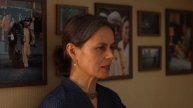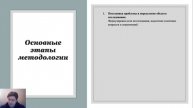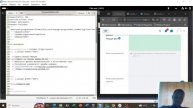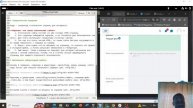Secondary education | Wikipedia audio article
This is an audio version of the Wikipedia Article:
Secondary education
00:02:19 1 Definition
00:06:35 2 History
00:08:52 2.1 Renaissance and reformation
00:10:59 2.2 Industrialisation
00:12:08 2.3 Universal Education
00:16:45 3 Right to a secondary education
00:20:31 4 Future directions for secondary education
00:21:57 5 By country
00:30:12 6 See also
Listening is a more natural way of learning, when compared to reading. Written language only began at around 3200 BC, but spoken language has existed long ago.
Learning by listening is a great way to:
- increases imagination and understanding
- improves your listening skills
- improves your own spoken accent
- learn while on the move
- reduce eye strain
Now learn the vast amount of general knowledge available on Wikipedia through audio (audio article). You could even learn subconsciously by playing the audio while you are sleeping! If you are planning to listen a lot, you could try using a bone conduction headphone, or a standard speaker instead of an earphone.
You can find other Wikipedia audio articles too at:
https://www.youtube.com/channel/UCuKfABj2eGyjH3ntPxp4YeQ
You can upload your own Wikipedia articles through:
https://github.com/nodef/wikipedia-tts
"The only true wisdom is in knowing you know nothing."
- Socrates
SUMMARY
=======
Secondary education covers two phases on the International Standard Classification of Education scale. Level 2 or lower secondary education (less common junior secondary education) is considered the second and final phase of basic education, and level 3 (upper) secondary education is the stage before tertiary education. Every country aims to provide basic education, but the systems and terminology remain unique to them. Secondary education typically takes place after six years of primary education and is followed by higher education, vocational education or employment. Like primary education, in most countries secondary education is compulsory, at least until the age of 16. Children typically enter the lower secondary phase around age 11. Compulsory education sometimes extends to age 19.
Since 1989, education has been seen as a basic human right for a child; Article 28, of the Convention on the Rights of the Child states that primary education should be free and compulsory while different forms of secondary education, including general and vocational education, should be available and accessible to every child. The terminology has proved difficult, and there was no universal definition before ISCED divided the period between primary education and university into junior secondary education and upper secondary education.
In classical and mediaeval times secondary education was provided by the church for the sons of nobility and to boys preparing for universities and the priesthood. As trade required navigational and scientific skills the church reluctantly expanded the curriculum and widened the intake. With the Reformation the state wrestled the control of learning from the church, and with Comenius and John Locke education changed from being repetition of Latin text to building up knowledge in the child. Education was for the few. Up to the middle of the 19th century, secondary schools were organised to satisfy the needs of different social classes with the labouring classes getting 4 years, the merchant class 5 years and the elite getting 7 years. The rights to a secondary education were codified after 1945, and countries are still working to achieve the goal of mandatory and free secondary education for all youth under 19.
Видео Secondary education | Wikipedia audio article автора Авто-Кулинарная Школа
Видео Secondary education | Wikipedia audio article автора Авто-Кулинарная Школа
Информация
28 февраля 2025 г. 3:30:04
00:30:51
Похожие видео
 Мамина Школа 12 июля 2021 - Лалабихари даси
Мамина Школа 12 июля 2021 - Лалабихари даси Лариса Сметанникова Триумфальное 3 мая 2025
Лариса Сметанникова Триумфальное 3 мая 2025 Oppo Reno 7 Pro best cinematic video | Cinematic mode oppo Reno 7
Oppo Reno 7 Pro best cinematic video | Cinematic mode oppo Reno 7 Один день из жизни ССДишника. Решили что будем покупать. Чирон или Агера
Один день из жизни ССДишника. Решили что будем покупать. Чирон или Агера Защита презентации проект4
Защита презентации проект4 It Only Takes a Few Steps to Register Your Smart Bro WiFi Postpaid SIM
It Only Takes a Few Steps to Register Your Smart Bro WiFi Postpaid SIM Выполнение презентации по лаб №13 имит. модел.
Выполнение презентации по лаб №13 имит. модел. Как это снято_ Бэкстейдж портретной фотосессии_ свет, позирование, обработка, Nikon
Как это снято_ Бэкстейдж портретной фотосессии_ свет, позирование, обработка, Nikon Friedman BE OD deluxe- quick test
Friedman BE OD deluxe- quick test Доклад по ОТС
Доклад по ОТС ФИЛЬМ-3. ЧИСТИЛИЩЕ: "Переход"
ФИЛЬМ-3. ЧИСТИЛИЩЕ: "Переход" Peugeot 308 1.6 BLUEHDI 120PK EXECUTIVE | Panoramadak | Leder | 18 inch
Peugeot 308 1.6 BLUEHDI 120PK EXECUTIVE | Panoramadak | Leder | 18 inch 037 Centering our Page
037 Centering our Page Защита презентации по лаб №13 имит. модел.
Защита презентации по лаб №13 имит. модел. Презентация проект4
Презентация проект4 Можно ли мыть ЭЛЕКТРОНИКУ Водой?
Можно ли мыть ЭЛЕКТРОНИКУ Водой? Hino head gasket failure Ep6
Hino head gasket failure Ep6 Mercedes W290 service menue
Mercedes W290 service menue Зерновоз👍🏻
Зерновоз👍🏻 Выполнение отчёта проект4
Выполнение отчёта проект4
